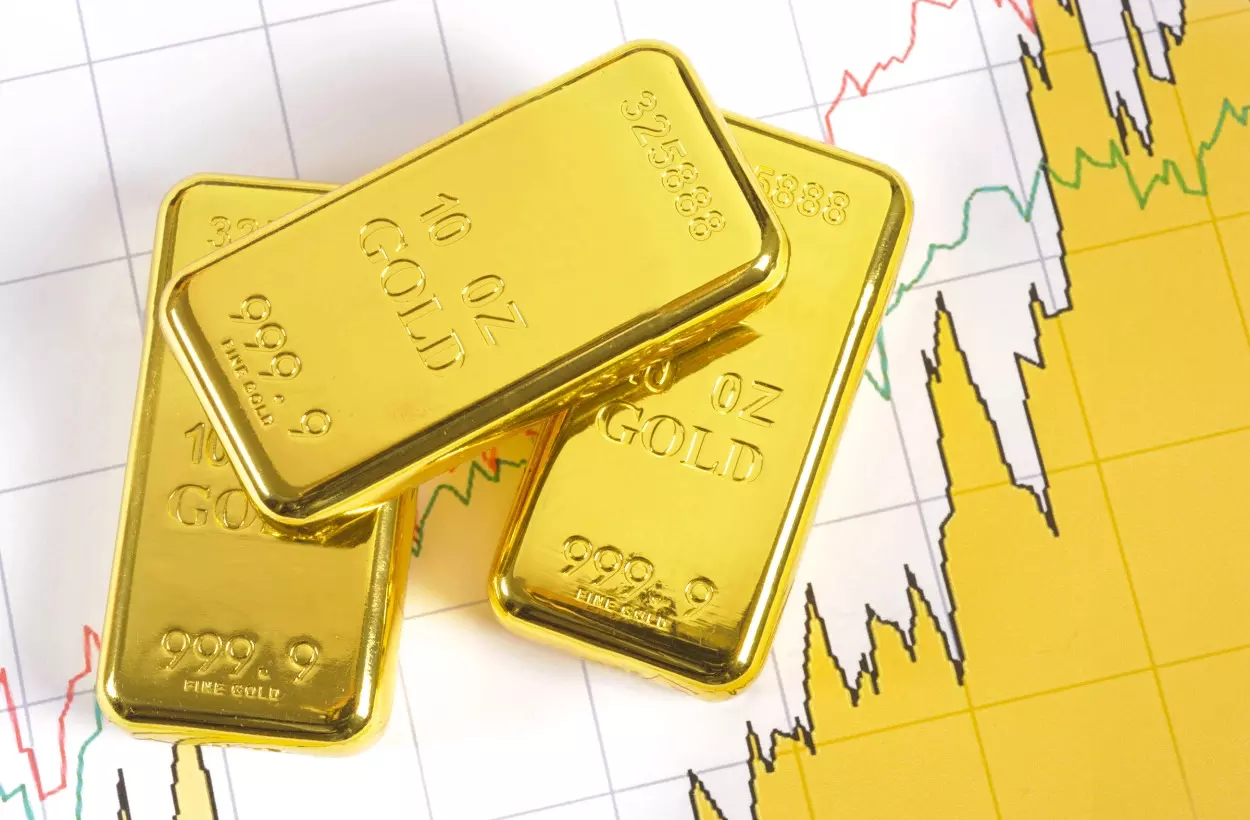Gold emerges as haven in 2024 amid geopolitical uncertainty
The RBI added 16.2 tonnes of gold to its reserves in 2023 and 32 tonnes in 2022, WGC data stated
image for illustrative purpose

Hyderabad: The World Gold Council's Gold Demand Trends report for 2023 presents a comprehensive narrative of the global gold market, reflecting a delicate balance between challenges and opportunities. The market witnessed a 5 per cent decline in global gold demand, reaching 4,448.4 tonnes. This dip, outlined in the WGC report, can be primarily attributed to the persisting trend of Exchange-Traded Fund (ETF) outflows.
In comparison, the global gold demand stood at 4,699 tonnes in 2022, indicating evolving dynamics within the market. The report underscores the consistent trend of annual outflows from global gold ETFs, with 244.4 tonnes exiting in 2023. This marks the third consecutive year of decline, and Europe, experiencing substantial losses, saw holdings plummet by 180 tonnes, marking the worst annual performance since 2013. October's substantial outflows dominated the final quarter, though there was a slowdown towards the year-end.
The beginning of 2024 has seen a continuation of outflows from European funds, coupled with a resumption of decline in North American-listed funds. Drivers for these outflows include robust equity performance and the fluctuating expectations surrounding the timing of significant rate cuts by major central banks worldwide.
Central bank buying in 2023 experienced a modest decline of 45 tonnes, totalling 1,037 tonnes compared to the previous year's 1,082. Despite the decline, 2023 marked the second-highest year for central bank buying on record. Notably, the People's Bank of China contributed 225 tonnes, and the National Bank of Poland added 130 tonnes to their reserves, while the Central Bank of Uzbekistan and the National Bank of Kazakhstan were notable sellers.
Bar and coin investment displayed a 3 per cent decline, with European demand plummeting by 59 per cent year-on-year. This decline was offset by a robust post-COVID recovery in China, where annual demand surged by 28 per cent to 280 tonnes. There were also notable increases in demand in India (185 tonnes), Turkey (160 tonnes), and the US (113 tonnes), effectively offsetting these regional declines.
The global jewellery market, defying expectations, showcased resilience with a modest 3-tonne year-on-year increase. China played a pivotal role in this, recording a remarkable 17 per cent surge in gold demand, effectively offsetting a 9 per cent decrease in India.
Louise Street, Senior Markets Analyst at the World Gold Council, emphasized the unwavering support of central banks in sustaining gold demand and highlighted the potential impact of geopolitical uncertainties in 2024. Street anticipates ongoing conflicts, trade tensions, and over 60 elections worldwide to drive investors towards gold, reinforcing its role as a reliable safe-haven asset. Street also noted that central banks, often citing gold's crisis performance, are likely to sustain high demand, potentially offsetting a slowdown in consumer demand due to elevated gold prices and slowing economic growth.
Despite the challenges, the intricate dance of market forces continued in 2023. ETF outflows remained a persistent theme, with European holdings experiencing the worst annual performance since 2013. However, the slowdown towards the end of the year suggests a possible shift in dynamics. North American-listed funds resumed their decline after a brief hiatus in November and December, underscoring the impact of global economic uncertainties on investor sentiment.
Central banks, despite a modest dip in buying, maintained their position as significant players in the gold market. The People's Bank of China and the National Bank of Poland led in bolstering their reserves, while the Central Bank of Uzbekistan and the National Bank of Kazakhstan opted for notable selloffs. The cumulative central bank buying in recent years underscores their strategic approach to gold as a reliable asset, especially during times of economic uncertainty.
Bar and coin investment faced headwinds, particularly in Europe, where demand plummeted by 59 per cent year-on-year. Nevertheless, the robust recovery in China post-COVID, coupled with increased demand in India, Turkey, and the US, showcased the market's ability to adapt to varying regional dynamics.
The global jewellery market, often sensitive to price fluctuations, displayed remarkable resilience. The 17 per cent surge in gold demand in China offsetting the decrease in India is a testament to the metal's enduring appeal, even amidst record-high prices. As the world emerges from the shadow of the pandemic, these contrasting trends in jewellery demand reflect the varying degrees of economic recovery and consumer behaviour.
Louise Street's insights into the potential impact of geopolitical uncertainties in 2024 add a layer of anticipation to the narrative. Ongoing conflicts, trade tensions, and a plethora of elections worldwide are poised to be significant drivers, potentially directing investors towards gold as a proven safe-haven asset. Street's acknowledgement of central banks relying on gold's crisis performance suggests a sustained high demand in this sector, potentially offsetting a slowdown in consumer demand due to elevated gold prices and slowing economic growth.
In essence, the global gold market in 2023 was a tapestry of challenges and resilience. ETF outflows, central bank activities, and regional variations in demand contributed to the intricate mosaic of market dynamics. As we step into 2024, the anticipation of how geopolitical factors will further shape this narrative adds a layer of complexity to an already multifaceted market.

